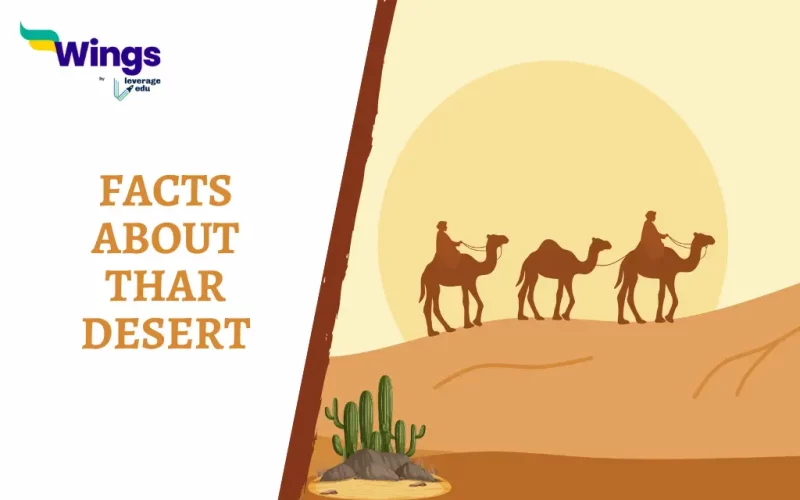The Thar Desert is well known to all the Indians because we have read it at least once during our school years. Well! The Thar Desert is also known as the Great Indian Desert. It spans over 77,000 square miles across India and Pakistan, dominating the northwestern region of the subcontinent. Rajasthan holds most of the desert, with smaller portions extending into Punjab, Haryana, and Gujarat in India, and reaching Pakistan’s Sindh province. Moreover, the Indus River marks the western limit of the Thar Desert, where the arid landscape transitions to wetter areas. This article will discuss some interesting facts about the Thar desert.
Overview of Thar Desert
Table of Contents
Before learning about the Thar Desert it is important we know an overview of the place.
| Thar Desert Overview | |
| Feature | Description |
| Location | Partly in Rajasthan, India, and Punjab and Sindh provinces, Pakistan |
| Area | 77,000 square miles (200,000 square kilometers) |
| Border (west) | Indus River plain |
| Border (north and northeast) | Punjab Plain |
| Border (southeast) | Aravalli Range |
| Border (south) | Rann of Kachchh |
| Climate | Subtropical desert |
| Name origin | Thul (general term for the region’s sand ridges) |
Facts About the Thar Desert
Now, let’s move to the facts about the Thar desert.
- It is one of the largest deserts in the world, covering an area of approximately 200,000 sq. km. (77,000 sq mi). Furthermore, it is the 17th-largest desert globally and the 9th-largest hot subtropical desert.
- India holds about 85% of the Thar Desert, with the remaining 15% in Pakistan. Interestingly, the desert forms a natural border between the two countries.
- The Desert receives very little rainfall, with an annual average of 100-500 millimeters which is 4-20 inches. Most of this rainfall occurs during the monsoon season, from July to September.
- Summers can be scorching, with temperatures reaching up to 50 degrees Celsius (122 degrees Fahrenheit). In contrast, winters can be quite cold, with temperatures dropping to as low as 0 degrees Celsius (32 degrees Fahrenheit).
- Despite the harsh conditions, the Thar Desert is home to a variety of unique plants and animals. Some of the animals found in the desert include the Indian gazelle, desert fox, blackbuck, and the Great Indian Bustard, which is one of the heaviest flying birds in the world.
- It is home to several indigenous tribes, such as the Bishnois, Bhils, and Raikas. These tribes have adapted to the desert’s harsh conditions for centuries and have developed unique cultures and ways of life.
- The Sam Sand Dunes, located near Jaisalmer, is a major tourist attraction, offering visitors the chance to experience the beauty and serenity of the desert.
- The Desert is facing several environmental challenges, including desertification, overgrazing, and climate change. Moreover, these challenges threaten the delicate ecosystem of the desert and the livelihoods of the people who live there.
- The Thar Desert is an important part of India’s and Pakistan’s history and culture. Additionally, the desert has been featured in folklore, literature, and art for centuries.
- Despite the challenges it faces, the Thar Desert is a resilient ecosystem that has adapted to survive in a harsh environment. The desert is a reminder of the power of nature and the importance of conservation.
Related Blogs
| 60+ Interesting Facts about India | 20 Interesting Fun Facts About Rain |
| 31 Interesting Facts About India’s Geography | GK and Current Affairs |
| 19 Important Facts About Jharkhand | Jaisalmer Fort History |
Hope you had fun reading these interesting facts about the Thar Desert. If you like reading about facts, you can visit our interesting facts page to read more such blogs.
 One app for all your study abroad needs
One app for all your study abroad needs













